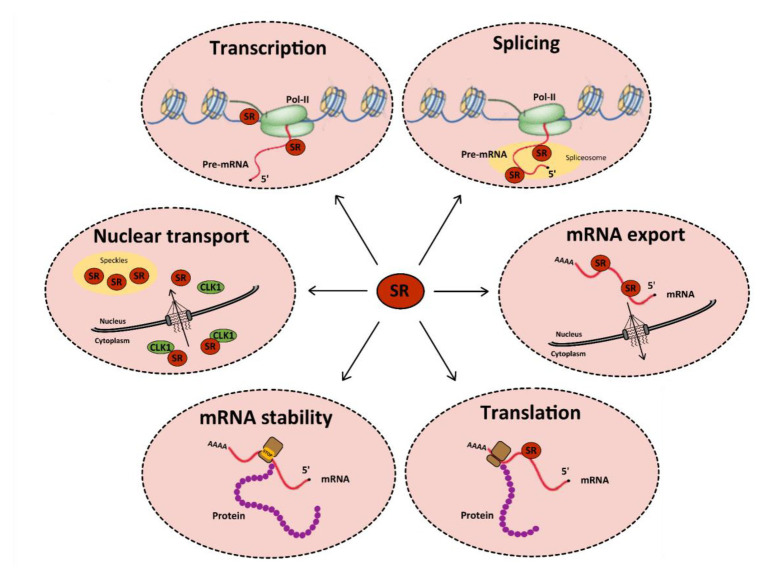Figure 1.
Functions of serine/arginine-rich (SR) proteins in mRNA metabolism. SR proteins (red circles) regulate transcription by activating the RNA polymerase II (in green). They also regulate constitutive and alternative splicing of pre-mRNAs by the spliceosome (in yellow). After splicing, SR proteins remain linked to mRNAs and some of them are involved in their nucleocytoplasmic export. In the cytoplasm, SR proteins can be redirected to the nucleus or regulate mRNA translation and/or stability: indeed, splicing regulation by SR proteins can induce the inclusion of a premature stop codon, which favors the recruitment of cellular proteins involved in RNA degradation by the non-sense mediated decay (NMD) pathway. Finally, some SR proteins can be involved in the nuclear import of Cdc2-like kinase 1 (CLK1). All these functions are tightly regulated by multi-site phosphorylation of SR proteins that also modulates their subcellular localization in the cytoplasm and the nucleus.

